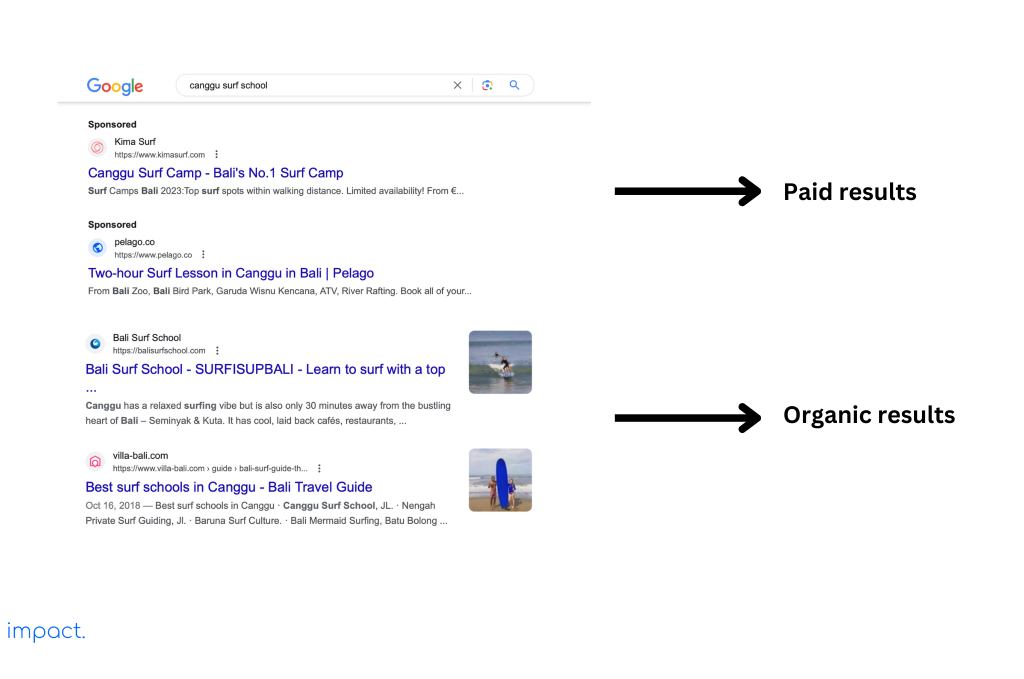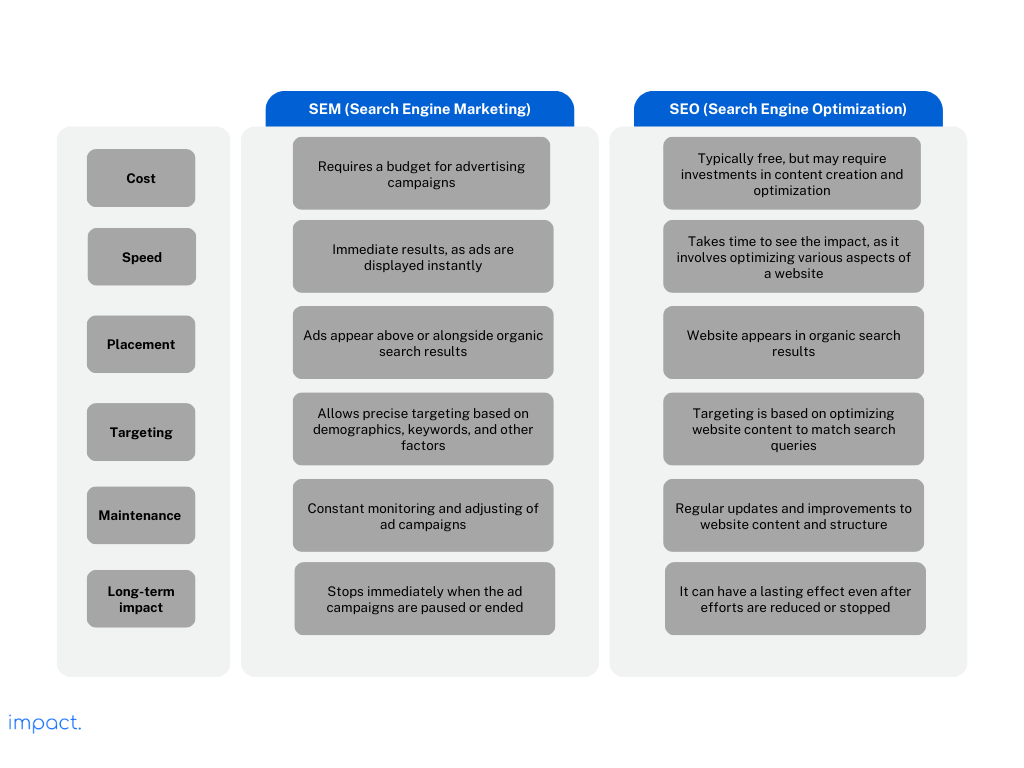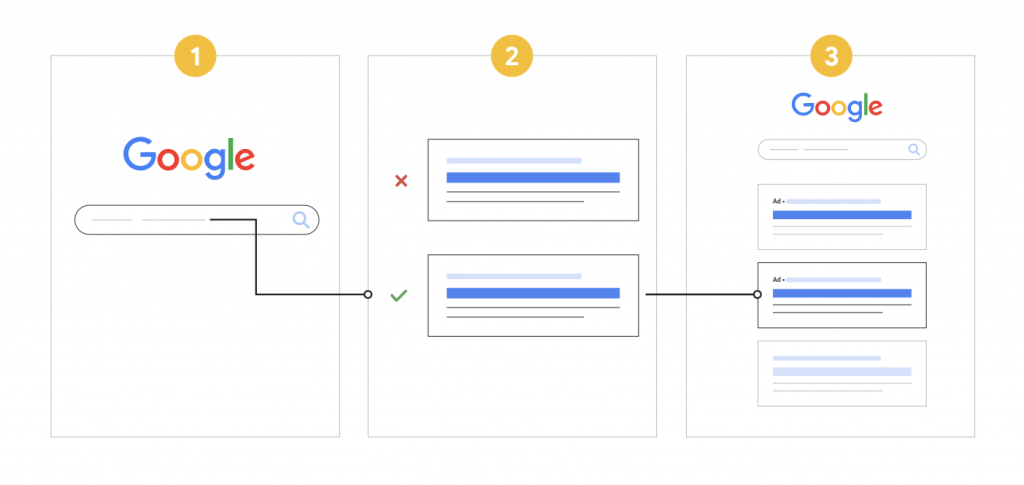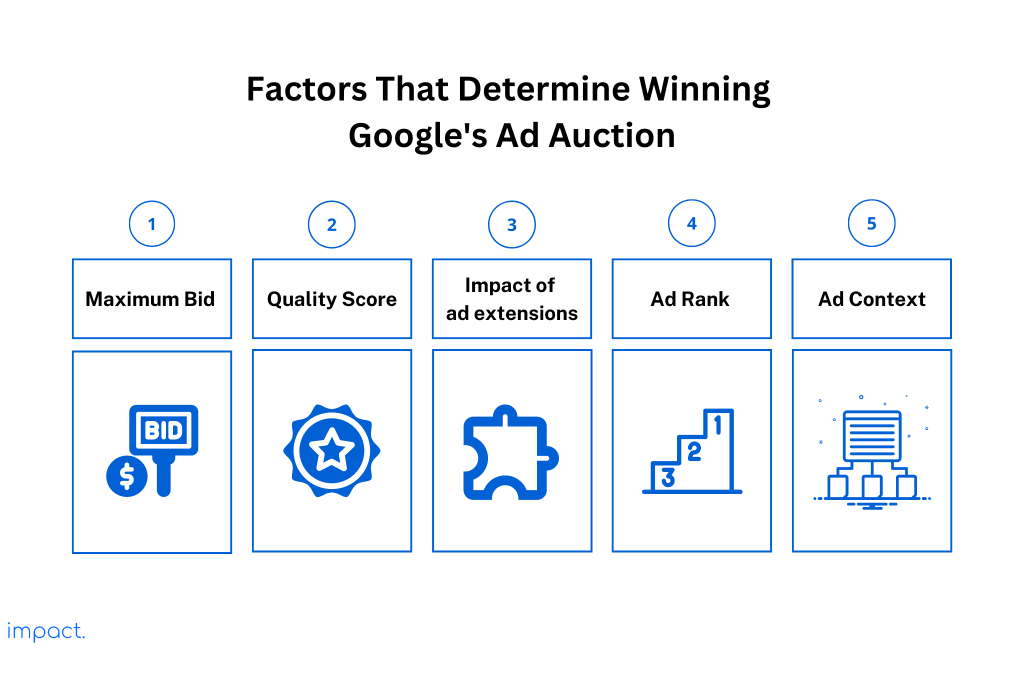Kanban: Definition, 6 Rules, and its Benefits
Kanban is a crucial part of the Just in Time (JIT) system, which we discussed…
Sean Thobias
May 17, 2025Navigating the ever-changing digital landscape can be a challenge. In this chapter of our digital marketing guide, we will explore Search Engine Marketing (SEM) and its essential role in achieving online success.
SEM offers a powerful solution for businesses looking to establish a solid online presence. It’s a vital part of digital marketing that helps you reach potential customers actively searching for what you offer.
This article aims to provide you with the knowledge and tools to succeed in SEM. We’ll cover everything from understanding how it differs from SEO, its components, and how it works. Whether you’re a business owner, a marketing professional, or simply curious, this guide is your go-to resource for effective SEM strategies.
Read more: Unlocking Growth: 19 Traction Channels for Business Success
SEM, or Search Engine Marketing, is a paid digital marketing strategy that helps your business’s products or services become more visible on search engine result pages (SERPs).
Search engines like Google display two types of results — organic and paid.

These two results differentiate SEM from SEO (Search Engine Optimization). SEO is a specific strategy that aims to improve organic rankings through optimizations and content creation. SEO is trying to gain free traffic on the internet.
The table below tells you the main differences between SEM and SEO.

SEM enable businesses to target their audience effectively by displaying ads in search engine results pages (SERPs) when users actively search for relevant keywords, increasing the visibility and accessibility of their offerings. In addition to that, SEM offers some other advantages. Let’s look at five of them:
A business should consider using Search Engine Marketing (SEM) in the following situations:
When creating your SEM strategy, the first step is to select a platform that aligns with your business requirements. There are several options available, each with its advantages and disadvantages. Here are three examples of commonly used platforms for SEM:
Google Ads is a popular SEM platform (Search Engine Marketing). It lets advertisers show their ads on Google’s search engine results pages (SERPs), partner websites, and mobile apps.
You only need an account and a minimum budget of $10 daily to use Google Ads. You choose the keywords you want to target, and your ads will automatically appear when people search for those keywords.
The platform can be complicated, especially when figuring out your keyword strategy. However, you’ll get access to powerful tools and lots of data to help you.
Microsoft Advertising (formerly Bing Ads) allows advertisers to display ads on Bing search engine results pages and partner websites, including Yahoo. It generally has lower costs per click (CPC) compared to Google.
You can easily set up campaigns to target different time zones, which is excellent for reaching international audiences. You can customize settings for individual ad groups without changing your entire campaign.
It stands out from Google because Microsoft Advertising provides more choices for budgeting, targeting specific locations, and distributing ads across different networks. These options can help you optimize your SEM campaign effectively.
Yahoo! Gemini is Yahoo’s advertising platform for search and native ads. It combines both types of advertising in one place. Native ads are preferred for building trust and are great for inbound marketing.
Yahoo! Gemini’s native ads include content recommendation boxes and stream ads, which catch prospects’ attention. They target engaged users, making them more receptive to your content.
To choose the right SEM platform, consider the following factors:
Ranking your website higher than organic search results is an effective strategy to attract more customers and increase your revenue. So, how does Search Engine Marketing (SEM) work? As most businesses use Google, we will use it in our explanation.
When you search on Google, there’s a process determining which ads will appear and in what order. This process is called the ad auction. Whenever you search, an auction takes place to decide which ads will be displayed and where they will appear on the page.
Below are three mechanics to help you understand how Google Ad Auction works:

Source: Google Ads Help: Auction
Google searches for ads that contain keywords related to a search. First, you must focus on the keywords you want to bid on and the maximum amount you will pay for each click. The cost will vary based on the industry your business belongs to.
Google’s system goes through a filtering process to eliminate ads that are not eligible. It ensures that only ads appearing on searches with significant commercial intent are displayed. Moreover, it separates advertisements that target a different country or violates Google’s policies, ensuring compliance and relevance.
Finally, the ads appear on the search engine. The position of the search is not determined by the highest bid, like a regular auction. Winning the ad auction depends on these five factors:

Search Engine Marketing (SEM) involves various components essential for successful online advertising campaigns. Here are the key elements of SEM:
Keyword research is the foundation of SEM. It involves identifying and selecting the most relevant and effective keywords that potential customers will likely use when searching for products or services. Thorough keyword research helps optimize ad targeting and improve campaign performance.
It is crucial to create ads that grab people’s attention and make them want to click on them. These ads should be short and easy to understand and highlight what makes your products or services unique. When your ads are well-written, more people will click on them and visit your website.
A landing page is where users land after clicking on your ads. Optimizing landing pages is crucial to ensure a seamless user experience and maximize conversions. Elements such as relevant content, clear call-to-action (CTA), user-friendly design, and mobile responsiveness contribute to successful landing page optimization.
Tracking your SEM campaigns’ performance is essential to measuring success and making data-driven decisions. Performance tracking involves monitoring critical metrics like click-through, conversion, cost-per-click, and return on investment (ROI). Analytics tools provide insights into campaign performance, enabling you to optimize strategies and allocate resources effectively.
Read more: Social Media Marketing: A Guide & 3 Strategies for Success
Regarding SEM (Search Engine Marketing), following best practices is essential for the best results. By using these strategies, businesses can make their ad campaigns more effective and reach their target audience more quickly. Let’s look at some SEM best practices that can help companies get the most out of their online advertising.
When planning your SEM campaigns, it’s crucial to do thorough keyword research. It means finding the right words and phrases that match what your target audience is searching for and are relevant to your products or services. To help with this, you can use tools or platforms explicitly designed for keyword research, such as Google Keyword Planner, SEMrush, or Moz Keyword Explorer.
When conducting keyword research, thinking beyond just the apparent keywords is essential. Consider terms that may attract customers at different stages of the buying process.
For example, think about words that relate directly to your business and terms that intersect with your customers’ problems and expertise. Expanding your keyword choices allows you to reach potential customers at various stages of their decision-making journey.
A/B testing is a helpful method that compares two versions of something to see which works better. In SEM, you can use A/B testing to create different versions of your ads and landing pages.
By comparing elements like headlines, images, calls to action, or even the entire ad format, you can gather data on what your audience likes more. This data-driven approach helps you improve your campaigns by using the versions that perform best and making adjustments to your messaging and design.
SEM campaigns often follow a structured approach that uses tactics like dynamic keyword insertion (DKI) to create specific and targeted ads in large quantities. While this can be effective, it’s essential to go beyond the formula and personalize your ad campaigns for better results.
Research from McKinsey shows that personalized ads can lead to up to 30% greater efficiency in marketing spend. So, it’s worth investing time and effort into tailoring your messaging, offers, and ad formats to match the preferences and needs of your target audience.
Consider essential factors like demographics, interests, and browsing behavior to create ads that feel relevant and captivating to individual users. Personalizing your ads increases the likelihood of grabbing attention, driving more engagement, and boosting conversions.
Adaptability’s essential because things constantly change in the digital world. Monitor search engine updates, industry trends, and how people behave online.
Don’t be afraid to try new tools and technologies to improve your campaigns. Be ready to change your plans and methods as needed. By being flexible and proactive, you can stay ahead and ensure your SEM efforts continue working well, even when things constantly change.
Search engine marketing (SEM) is a continuous process that needs constant tweaking to get better results. To improve your performance:
By consistently making these adjustments based on real-time data, you can make your SEM efforts more effective and efficient.
If you want to take your business to the next level, mastering SEM is crucial. It lets you connect with your target audience when they’re actively searching for what you offer, leading to increased website traffic and improved sales.
It’s important to understand that SEM is different from SEO. While SEO focuses on improving organic rankings to gain free traffic, SEM involves ongoing monitoring, testing, and optimization to achieve optimal outcomes.
In the next chapter of our guide, we will explore content marketing, another vital component of digital marketing.
Impact Insight Team
Impact Insights Team is a group of professionals comprising individuals with expertise and experience in various aspects of business. Together, we are committed to providing in-depth insights and valuable understanding on a variety of business-related topics & industry trends to help companies achieve their goals.
See how our ERP provides better value.
Speak with our consultant to explore how we can improve your accounting, processes, and people.
